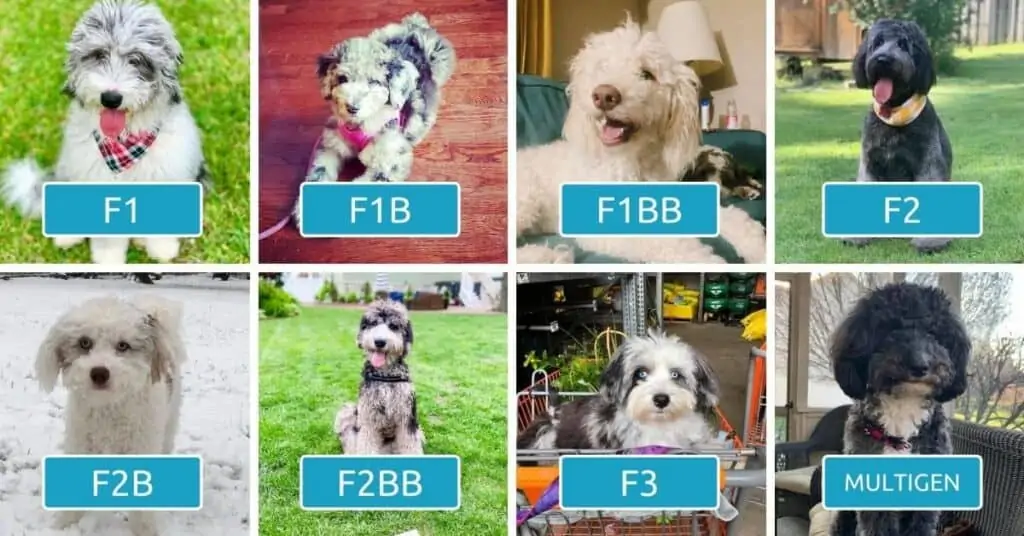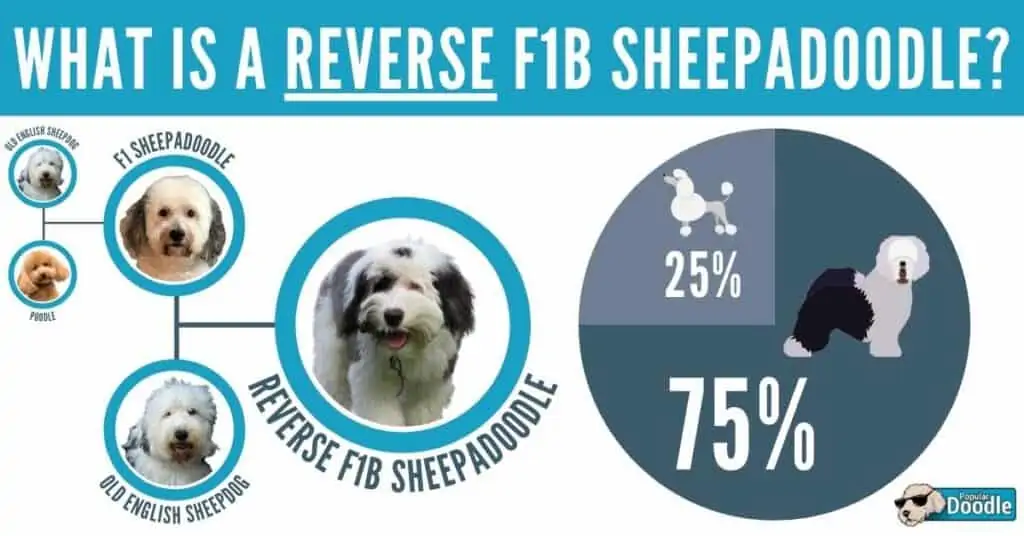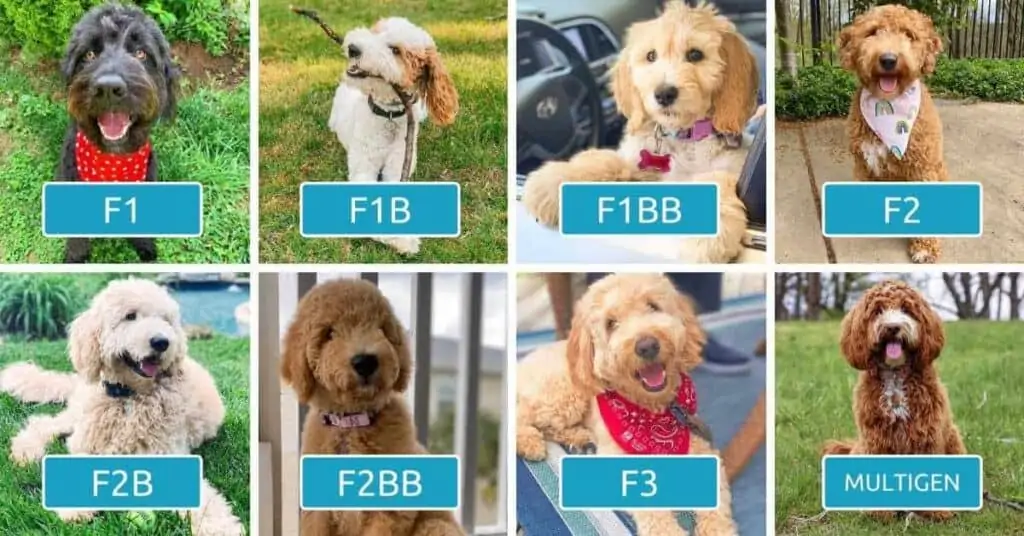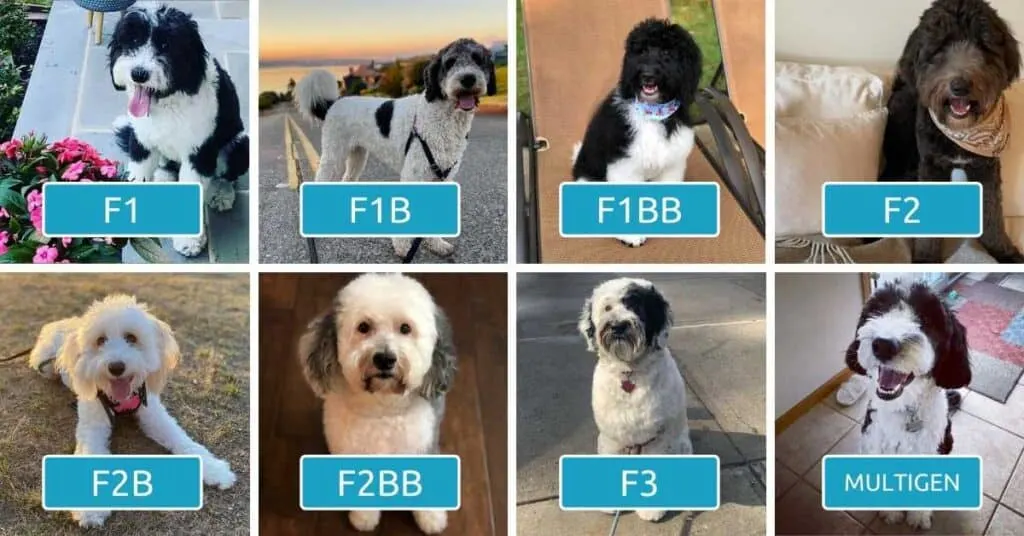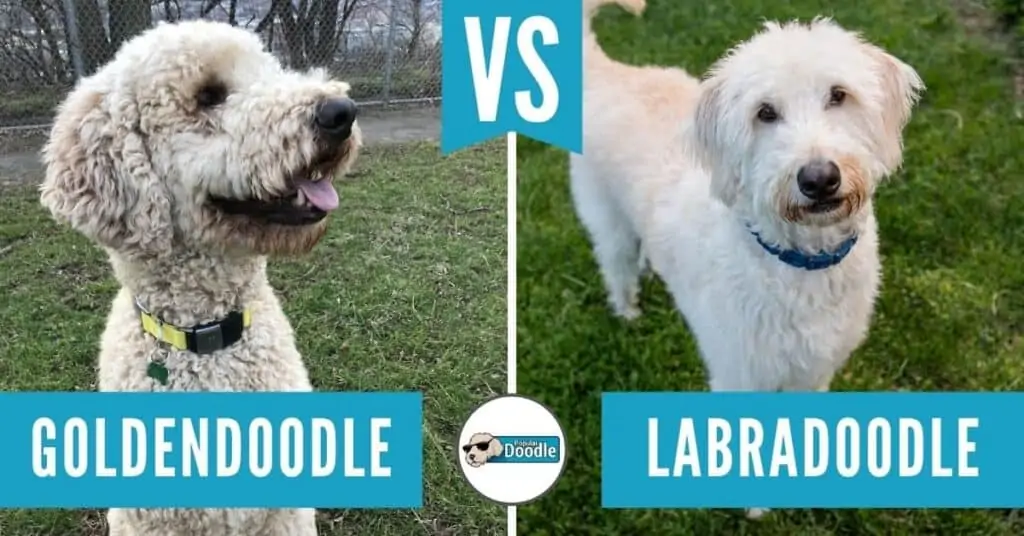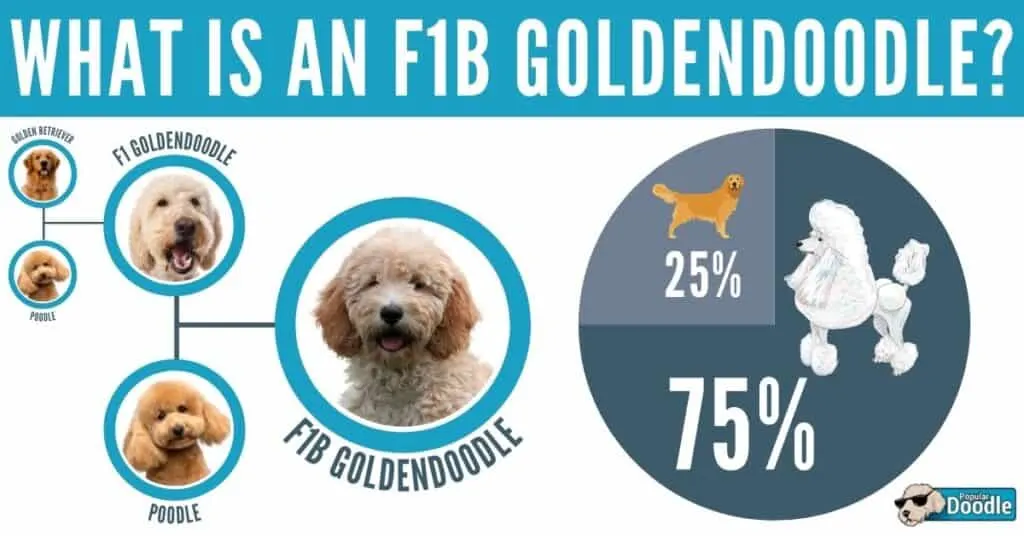
Generations are easily the most confusing part of adding a Goldendoodle to your family. Breeders throwing around terms like F1B, F2, and Multigen can leave you wondering what they are and why they matter.
While we have an entire article that explains Goldendoodle generations in-depth, to make things easier let’s focus on just the F1B generation for today.
So, what is an F1B Goldendoodle? An F1B Goldendoodle is a cross between a first-generation, F1 Goldendoodle and a purebred Poodle. The theoretical DNA split between the two parent breeds are 75% Poodle and 25% Golden Retriever.
The purpose of this generation is to increase the DNA percentage of the Poodle in this crossbreed. In doing so, you get more predictable and desirable traits such as having a low-shedding and allergy-friendly coat. We’ll talk more about this later!
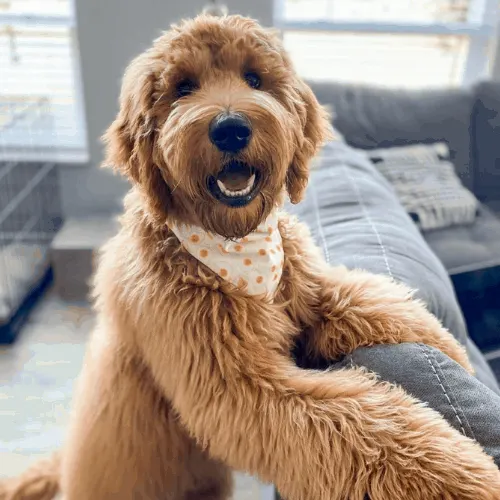
F1B Goldendoodle Meaning
F1B is an abbreviation for a first-generation backcross. The “F” indicates that the dog is a hybrid, mixed breed and the “1” indicates first generation.
The “B” indicates that it is backcrossed once to the purebred parent breed. “Backcrossing” is when you cross a mixed breed back to one of the parent breeds. In the Goldendoodle’s case this is almost always the Poodle.
What is a Reverse F1B Goldendoodle?
In very rare cases, a breeder may cross an F1 Goldendoodle with a Golden Retriever. This is what’s called a reverse F1B Goldendoodle. The DNA split in this case would be 25% Poodle and 75% Golden Retriever.
F1 vs F1B Goldendoodle
An F1 Goldendoodle is the most basic variety of this mixed breed. It is simply the result of breeding a purebred Golden Retriever with a purebred Poodle. The resulting puppies will have a roughly 50/50 split in DNA between the parent breeds.
An F1B Goldendoodle, on the other hand, is the result of breeding an F1 Goldendoodle with a purebred Poodle. This increases the theoretical amount of Poodle DNA in the cross from 50% to 75%.
In general, if you have allergies or have a strong aversion to shedding, an F1B is a better bet. However, an F1 will typically be cheaper, are more widely available at rescues, and typically have an easier-to-maintain, wavy coat compared to the curlier coat of a backcrossed Goldendoodle.
For any generation of Goldendoodle, you’ll want to get a quality slicker brush and use it frequently—at least every other day. My recommendation is the Chris Christensen Big G. This brush is on the expensive side, but it’s worth every penny in saved time and frustration!
F1B vs F2 Goldendoodle
F1B Goldendoodles are bred from an F1 Goldendoodle and a purebred Poodle. On the other hand, there are lots of combinations that can result in a second generation, or F2, Goldendoodle. Here are a few examples…
- F1 x F1
- F1 x F1B
- F1 x F2
Reputable breeders will often choose not to produce F2 Goldendoodle puppies because they can have even more unpredictable traits than F1 puppies. Some F2 Goldendoodles have flat coats and end up looking more like a Golden Retriever than a traditional Goldendoodle.
Unless you’re looking for a Goldendoodle closer in appearance and personality to a Golden Retriever, you’re probably better off choosing an F1B. They’ll be more likely to have the classic doodle appearance and the allergy and shedding advantages that come with more Poodle DNA.
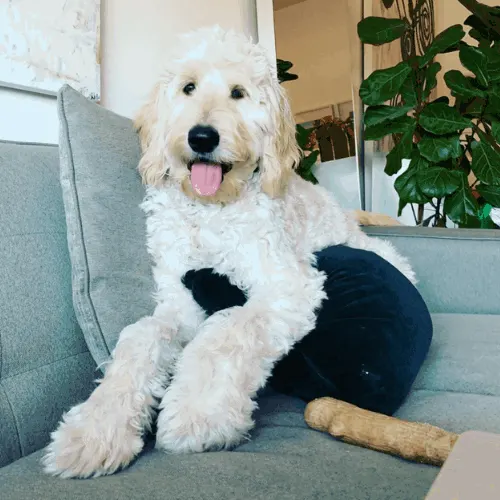
F1B vs F1BB Goldendoodle
An F1B Goldendoodle is bred by backcrossing an F1 Goldendoodle to a purebred Poodle. An F1BB Goldendoodle takes this a step further and backcrosses an F1B Goldendoodle to a purebred Poodle.
This double backcrossing results in a puppy with a theoretical DNA split of 87.5% Poodle and 12.5% Golden Retriever. An F1BB Goldendoodle is the closest in DNA a Goldendoodle will typically get to that of a purebred Poodle.
If someone in your family has allergies, an F1BB Goldendoodle is the safest generation to choose, as it’s the most likely to be hypoallergenic and non-shedding. The tradeoff is typically a higher price and a curlier coat that is prone to matting and tangles if not brushed frequently.
As mentioned before, owners of both of these generations should be prepared to invest in a quality brush like the Chris Christensen Big G Slicker Brush.
F1B vs F2B Goldendoodle
An F1B Goldendoodle backcrosses an F1 Goldendoodle to a purebred Poodle while an F2B Goldendoodle backcrosses an F2 Goldendoodle to a purebred Poodle.
The F1B Goldendoodle will have a theoretical DNA split of 75/25 in favor of the Poodle. The F2B Goldendoodle will be slightly more even, averaging 62.5% Poodle and 37.5% Golden Retriever DNA. This can depend on the lineage of the F2 Goldendoodle parent.
My preference between these two generations leans slightly towards the F1B. It’s a more straightforward paring and your odds of a puppy inheriting the desirable traits of the Poodle’s coat are higher.
Of course, when it comes down to two very similar generation such as these, a more important factor becomes the reputation of the breeder you’re choosing.
F1B Goldendoodle Size
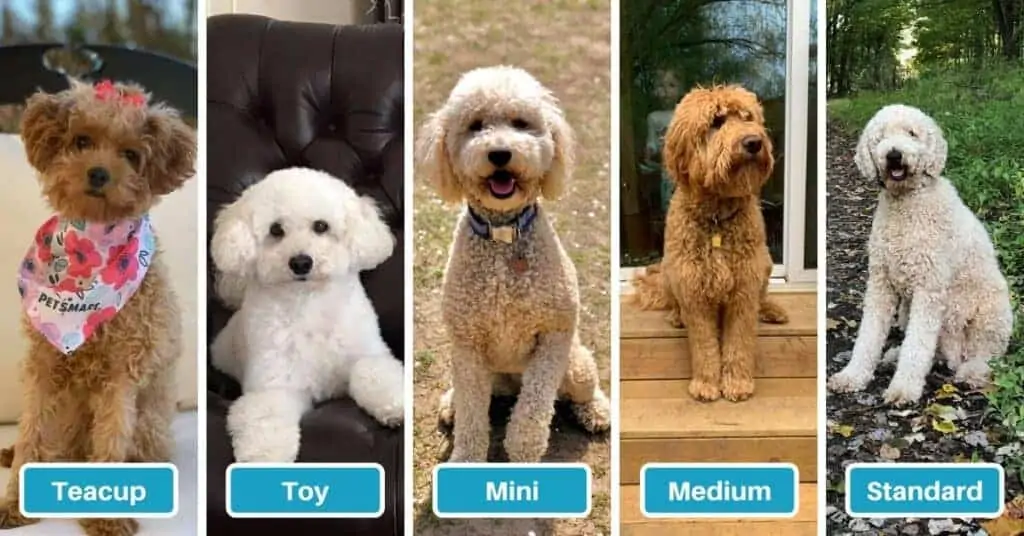
How big do F1B Goldendoodles get? The two most common sizes of F1B Goldendoodles are Mini and Standard. An F1B Mini Goldendoodle will weigh 20-40 pounds and stand 16-18 inches tall. An F1B Standard Goldendoodle can grow to be 19-25 inches tall and weigh between 40-85 pounds.
Read More: Goldendoodle Size Full Grown: How Big Do Goldendoodles Get? (Teacup, Toy, Mini, Medium, Standard)
Below are typical pairings as well as average height and weight measurements for all of the F1B sizes…
Teacup
An F1B teacup Goldendoodle is the result of breeding an F1 toy Goldendoodle and a toy Poodle.
F1B teacup Goldendoodles will weigh in at less than 13 pounds and only stand 9-12 inches tall.
Toy
An F1B toy Goldendoodle is a cross between an F1 mini Goldendoodle and a purebred toy Poodle.
F1B toy Goldendoodles usually stand 13-15 inches tall and weigh in at around 13-20 pounds.
Read More: Toy vs Mini Goldendoodle: Pros and Cons + Interactive Quiz
Mini
An F1B mini Goldendoodle is a cross between an F1 miniature Goldendoodle and a purebred miniature Poodle.
On average, F1B mini Goldendoodles will weigh between 20-40 pounds and measure 16-18 inches in height.
Read More: Mini Goldendoodle vs Goldendoodle: Which Size is Best? (QUIZ)
Medium
An F1B medium Goldendoodle is a cross between an F1 Goldendoodle and a purebred medium (also known as “moyen”) Poodle.
The typical size of an F1B medium Goldendoodle is 18-21 inches tall and 30-50 pounds.
There is a lot of gray area with this size as it’s often used to describe smaller standard Goldendoodles or larger miniature Goldendoodles.
Standard
An F1B standard Goldendoodle is a cross between an F1 standard Goldendoodle and a purebred standard Poodle.
F1B standard Goldendoodles will typically weigh between 40-85 pounds and stand 19-25 inches in height.
Price of an F1B Goldendoodle
In our survey of over 300 owners, we found that the average price of a Goldendoodle was $1,500. F1B Goldendoodles will usually fall right around this average, ranging from $1,300-$2,000.
If you’re looking for a Teacup, Toy, or Mini F1B Goldendoodle, expect to pay on the higher end of that range. On the other hand, F1B standard Goldendoodles will be a bit less expensive.
Other factors that influence how much your Goldendoodle will cost include your location, the reputation of the breeder, and if you choose to purchase a puppy from a breeder or adopt an adult from a Goldendoodle rescue or shelter.
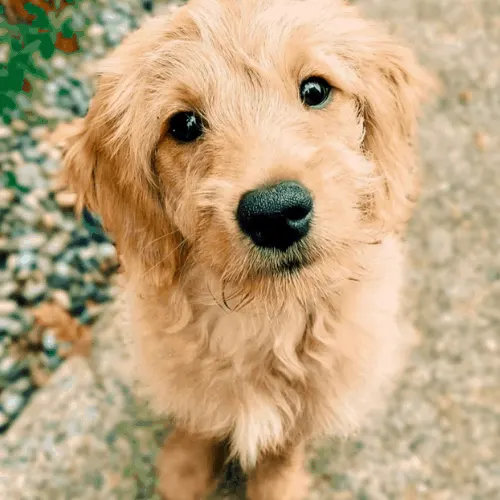
Are F1B Goldendoodles Healthy?
In general, Goldendoodles are a very healthy breed and the F1B generation is no exception. However, you’ll want to keep an eye out as your Goldendoodle can experience health issues from both their Golden Retriever and Poodle sides.
Accidents and injuries can be expensive and as a responsible dog owner you want to be prepared for these costs well in advance. That’s why I encourage all Goldendoodle owners to invest in a pet insurance plan as early in your dog’s life as possible.
Related: Veterinarians Weigh In: Should You Get Pet Insurance?
Two companies that are very popular amongst doodle owners are Healthy Paws and Embrace. Consider getting quotes and comparing policies to figure out which suits your needs and budget best.
Are F1B Goldendoodles Hypoallergenic?
F1B Goldendoodles are NOT guaranteed to be hypoallergenic. However, the F1B generation has a decent chance of being allergy-friendly thanks to the higher percentage of Poodle DNA.
If you suffer from severe allergies, you may want to consider an F1BB Goldendoodle instead to have the best chance of being able to tolerate your pet. An even safer choice may be choosing a purebred Poodle or a doodle that is a mix of two hypoallergenic breeds such as the Schnoodle or the Poochon.
Read More: Are Goldendoodles Hypoallergenic? (We Asked 76 Allergy Sufferers!)
Do F1B Goldendoodles Shed?
F1B Goldendoodles are typically low-shedding, however they are NOT guaranteed to be completely non-shedding. This is because only one of the two parent breeds are non-shedding.
Thanks to the 75% DNA of the Poodle in this generation, you may get lucky and have an F1B puppy that is completely non-shedding. However, don’t bank on this being the case 100% of the time.
Read More: Do Goldendoodles Shed? The TRUTH About Goldendoodle Shedding
Are F1B Goldendoodles Curly?
F1B Goldendoodles will typically have a curly coat similar to that of a Poodle.
While this is convenient when it comes to being allergy-friendly and low-shedding, keep in mind the upkeep necessary.
Brushing at least every other day will be necessary to prevent the hair of your Goldendoodle from becoming tangled or matted. You’ll also need to make regular haircut appointments at the grooming salon since your dog’s hair will grow constantly.
Here are some common haircut styles for Goldendoodles to use as inspiration…
- Short Haircut or “Summer Cut”
- Teddybear Cut
- Lamb Cut
- Lion Cut
- Puppy Cut
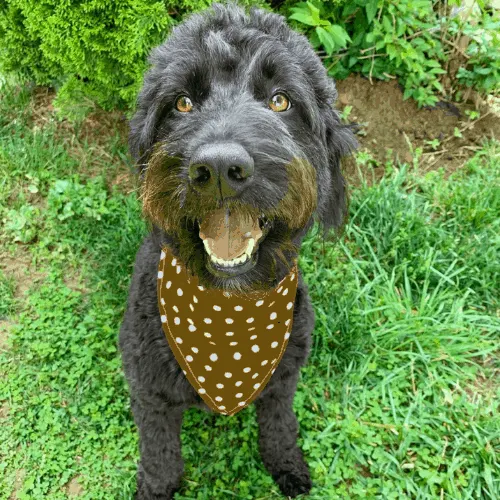
How Long Do F1B Goldendoodles Live?
The average lifespan of an F1B Goldendoodle is 12.5 years.
While the additional DNA from the longer-living Poodle helps increase this, keep in mind that lifespan is primarily influenced by the size of your Goldendoodle.
Smaller sizes like the teacup, toy, and mini F1B Goldendoodles will typically live longer than F1 standard Goldendoodles will.
Read More: Goldendoodle Lifespan: How Long Do Goldendoodles Live?
Where to Find F1B Goldendoodle Puppies for Sale
As they are one of the most common generations of Goldendoodles, F1B puppies should be easy to find at a local breeder. Keep in mind that there is a high demand for these dogs, so you may need to get added to a waitlist.
The most important thing is to look for the signs of a reputable breeder and avoid red flags that indicate you may be buying from a puppy mill or backyard breeder.
Read More: How to Recognize a Responsible Doodle Breeder (and Avoid Puppy Mills!)
F1B Goldendoodles may also be available from local rescues and shelters. Click here to see our recommended Goldendoodle rescues to use as a starting point for your search.
One thing to keep in mind is that rescues may not always know the exact generation of a Goldendoodle, depending on how they were acquired.




